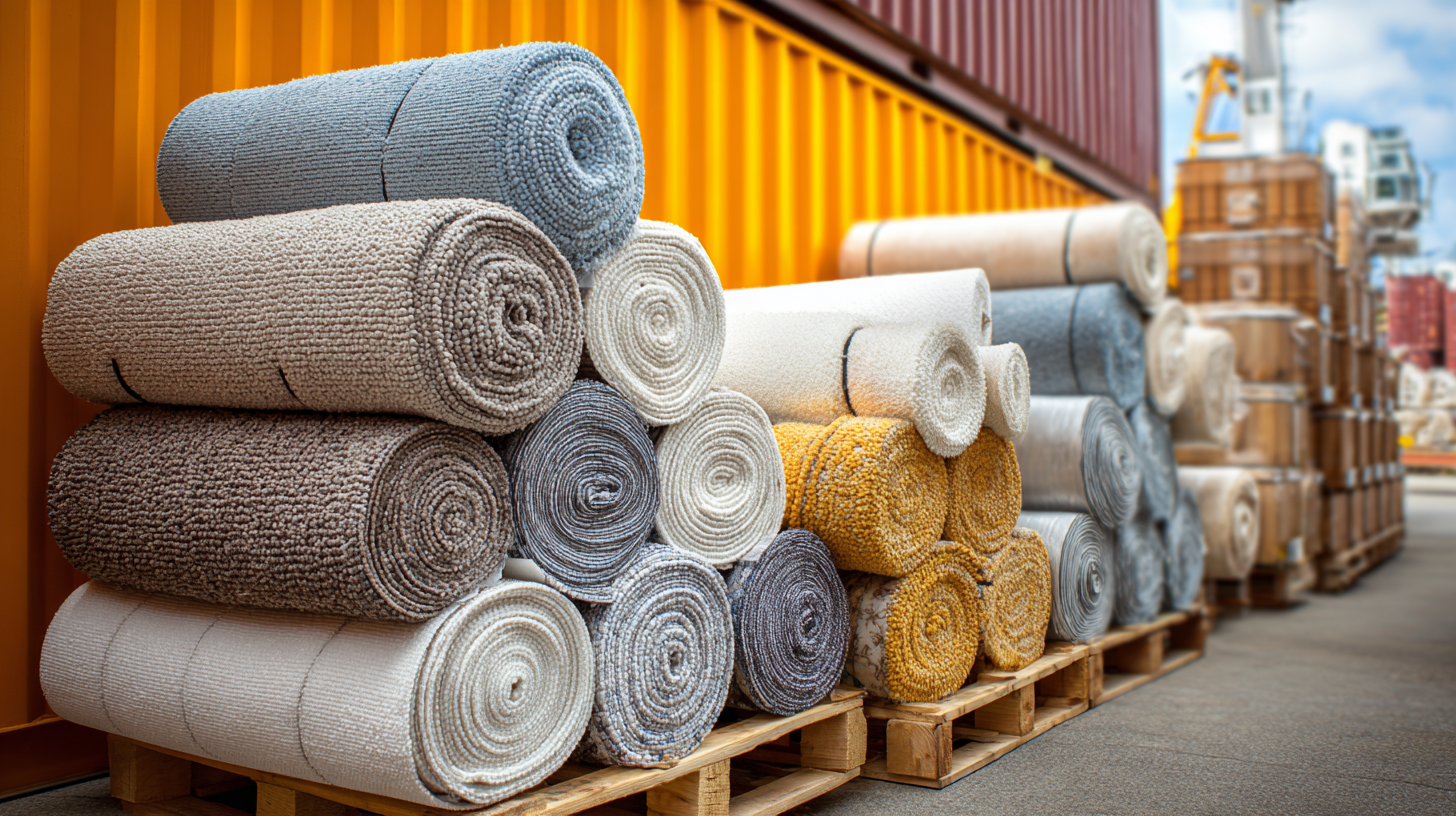In the ever-evolving world of bathroom accessories, the bathtub mat stands out not only for its functional benefits but also for its growing importance in global trade. According to a recent report by Grand View Research, the global bathtub mat market is projected to reach $7 billion by 2027, driven by increasing consumer awareness regarding safety and hygiene in bathrooms. As more consumers prioritize non-slip surfaces and easy maintenance, navigating the complexities of import and export certifications becomes crucial for manufacturers and retailers alike. Understanding the regulatory landscape ensures that high-quality products are introduced to diverse markets efficiently, all while adhering to safety standards. In this blog, we will explore the essential steps and best practices for obtaining the right certifications, empowering businesses to thrive in the competitive bathtub mat market.

 Navigating import and export certifications for bathtub mats is crucial for manufacturers and exporters in today’s global market. Understanding the various certifications can play a significant role in ensuring compliance and gaining a competitive edge. According to a report by the International Trade Administration, more than 70% of exporters face challenges related to compliance with international standards, which can result in costly delays. For bathtub mats, certifications like ASTM, ISO 9001, and SCS certified materials are pivotal as they speak to product quality and safety.
Navigating import and export certifications for bathtub mats is crucial for manufacturers and exporters in today’s global market. Understanding the various certifications can play a significant role in ensuring compliance and gaining a competitive edge. According to a report by the International Trade Administration, more than 70% of exporters face challenges related to compliance with international standards, which can result in costly delays. For bathtub mats, certifications like ASTM, ISO 9001, and SCS certified materials are pivotal as they speak to product quality and safety.
Moreover, with the increasing focus on sustainability, eco-label certifications are becoming more prominent. Bathtub mats made from recycled materials or organic fibers that are certified by recognized organizations not only appeal to environmentally-conscious consumers but also comply with various import regulations. Data from Statista indicates that the market for eco-friendly home products is expected to grow by 15% annually, highlighting the importance of obtaining proper certifications that cater to this demand. Exporters must remain vigilant and informed to navigate these complexities successfully.
When diving into the bathtub mat market, understanding key certifications is essential for ensuring the safety and compliance of your products. The first certification to consider is the ASTM (American Society for Testing and Materials) standards, which provide guidelines for slip resistance. Mats that meet ASTM requirements not only enhance consumer confidence but also reduce the risk of accidents in the bathroom. Additionally, look for mats certified by the CPSC (Consumer Product Safety Commission), which ensures that products are free from harmful substances and safe for everyday use.
Another crucial aspect is the ISO (International Organization for Standardization) certifications, particularly ISO 9001, which focuses on quality management systems. This certification assures that manufacturing processes meet consistent standards, leading to durable and reliable bathtub mats. Furthermore, consider eco-friendly certifications like the Green Seal or OEKO-TEX Label, which indicate that the materials used are safe for both the environment and consumer health. Prioritizing these certifications will not only elevate your brand's reputation but also align your products with market demands for safety and sustainability.
| Certification Name | Issuing Authority | Certification Purpose | Regions Required | Validity Period |
|---|---|---|---|---|
| ASTM F963 | ASTM International | Safety of Toys | United States | 3 Years |
| CE Marking | European Commission | Product Safety & Compliance | European Union | N/A |
| ISO 9001 | International Organization for Standardization | Quality Management Systems | Global | 3 Years |
| CPSC Compliance | U.S. Consumer Product Safety Commission | Regulation of Products | United States | N/A |
| REACH | European Chemicals Agency | Chemical Safety | European Union | N/A |
Navigating international regulations for bathtub mat imports and exports is essential for businesses aiming to thrive in a competitive market. According to a report from Grand View Research, the global bath mat market is expected to reach USD 2.5 billion by 2027, growing at a compound annual growth rate (CAGR) of 4.5%. This growth is driven by increased demand for innovative and high-quality bathroom accessories, but companies must be aware of the regulatory landscapes that vary from country to country.
Understanding the specifics of certifications such as ASTM International and ISO standards can help ensure compliance and streamline the import/export process. For instance, the ASTM D6394 standard for slip resistance is critical in markets where safety regulations are stringent. Additionally, the requirements for eco-friendly materials are becoming more prominent, influencing the choices of manufacturers. Reports indicate that around 60% of consumers prefer products made from sustainable materials, underscoring the necessity for certifications that prove compliance with environmental standards. By strategically navigating these regulations, companies can not only ensure smooth cross-border transactions but also enhance their market appeal.
When entering the market for bathtub mats, understanding the certification process is crucial for ensuring product safety and compliance. One of the first steps is to familiarize yourself with the relevant safety and quality standards that apply to your region. This typically includes standards from organizations such as ASTM or ISO, which focus on slip resistance, durability, and non-toxic materials. By proactively researching these requirements, you can avoid costly delays and ensure your products meet consumer expectations right from the outset.

Streamlining the certification process can save both time and resources. Consider collaborating with certified testing laboratories that specialize in home goods. Establishing a relationship with these labs can provide valuable insights into the testing process and help you prepare your products more effectively. Additionally, maintaining thorough documentation and implementing quality control measures during the production phase can significantly reduce the likelihood of setbacks during certification. By taking these proactive steps, you can navigate the certification journey with confidence and bring the best bathtub mats to your market.
When navigating the complexities of import and export certifications for bathtub mats, it's crucial to be aware of common mistakes that can hinder compliance and sales. One major pitfall is failing to understand the specific regulations of the target market, as compliance varies by region. For instance, the ASTM (American Society for Testing and Materials) standards and CE marking for safety in Europe are essential benchmarks that manufacturers must adhere to. Reports indicate that non-compliance with these standards can lead to significant financial losses, impacting both brand reputation and consumer trust.
To ensure a smooth certification process, consider the following tips: First, conduct thorough research on the certification requirements specific to your market. Engaging with industry experts can provide valuable insights and avoid missteps. Moreover, ensure all materials used in your bathtub mats are compliant with safety standards, such as avoiding harmful chemicals that can lead to product recalls. Additionally, maintain meticulous documentation during the certification process; this not only aids in inspections but also builds credibility with consumers.
Another frequent mistake is neglecting ongoing compliance post-certification. It’s vital to stay updated on any changes in regulations, as these can impact production and marketing. Regular audits and quality checks can mitigate risks and ensure that your product remains compliant, ultimately contributing to longevity and success in the market.
